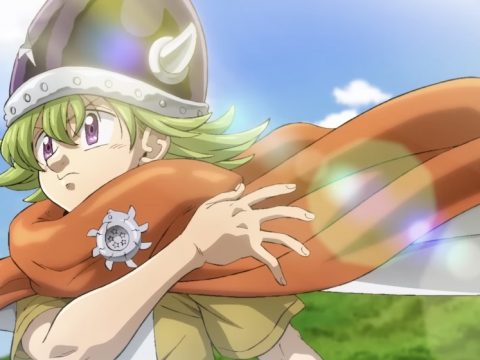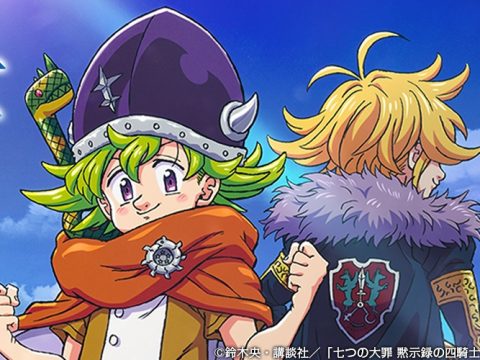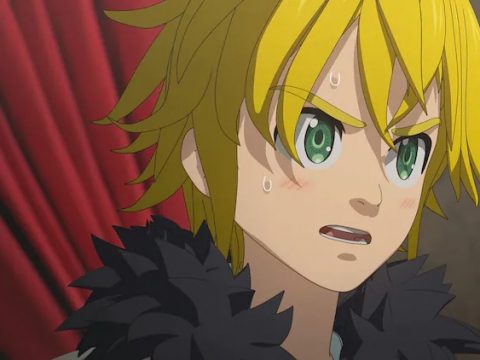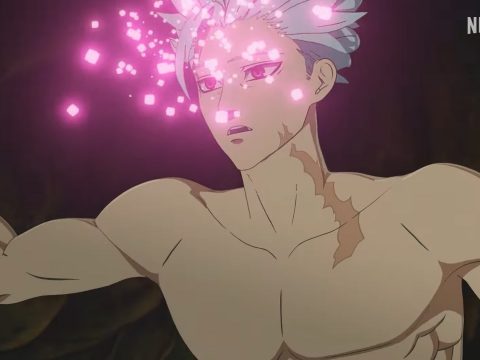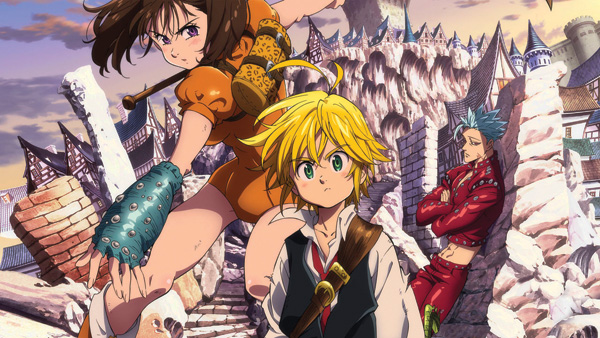
In a mythical age before the separation of the material world and the spirit world, the realm of Britannia is a place fraught with peril. Not only do monsters stalk the dark places where no civilized being would dare to tread, but the Seven Deadly Sins are still at large. Branded with the marks of beasts and wielding sacred weapons that grant them indescribable magical might, the Sins were once the most powerful band of warriors answering to the sovereign of the Kingdom of Liones.
However, a decade ago the Sins rebelled against their master, attempted to overthrow the king, and slaughtered everyone who dared to intervene, including Zaratras, the leader of the Holy Knights of Liones. After their coup failed, the Seven Deadly Sins disappeared. Their fates are uncertain and their whereabouts are unknown. Only the constant vigilance of the Holy Knights keeps the Kingdom of Liones safe from the evils at work within its own borders.
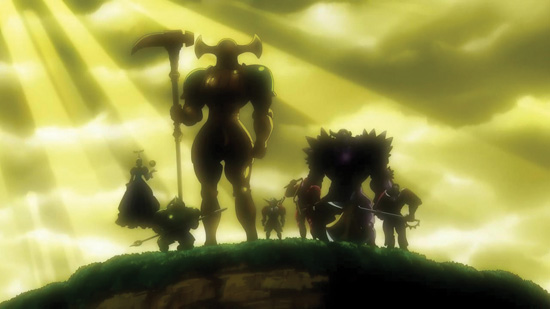
Such is the initial premise of The Seven Deadly Sins, a 2014 shonen action/fantasy TV anime that is directed by Tensai Okamura and features animation by A-1 Pictures. The truth of the matter is far murkier, since history is written by the winners. With the Sins out of the picture, the Holy Knights can rule unchallenged, dispensing punishment in the name of a king conveniently confined to his sick bed. Perhaps the Seven Deadly Sins aren’t so depraved, and perhaps the Holy Knights aren’t as virtuous as everyone claims them to be?
When the royal family is falsely imprisoned, Princess Elizabeth escapes and sets off on a quest in search of the Seven Deadly Sins. She believes that only the Sins are strong enough to oppose the tyrannical Holy Knights and to restore her father, the king, to power.

On her journey, Elizabeth befriends numerous heroes including: Meliodas, the Dragon Sin of Wrath and proprietor of the traveling Boar Hat tavern, whose youthful appearance and flirtatious nature belie a terrible power of inhuman origin; Diane, the Serpent Sin of Envy, a towering member of the Giant race who possesses the ability to control earth and stone; King, the Grizzly Sin of Sloth, a shape-shifting, telekinetic monarch of the Fairy Realm; Ban, the Fox Sin of Greed, an immortal bandit with the skill to steal even the strength of his foes; Gowther, the Goat Sin of Lust, a mysterious, armor-clad figure who wields memory-manipulating magic; Merlin, the Boar’s Sin of Gluttony, the most powerful spellcaster in all of Britannia; King Arthur, the young ruler of the neighboring nation of Camelot; and Hawk, a talking pig who helps Meliodas in managing the Boar Hat tavern.
The Seven Deadly Sins is a shonen action anime with fantasy trappings, and shonen action anime depend on spectacle and melodrama to hook their audience. The Seven Deadly Sins excels at both of these. The fight sequences between the Sins and the Holy Knights assume a truly cataclysmic magnitude, the kind of gigantic brawls in which everyone shouts the names of their special maneuvers aloud and a single slash from a sword can cut a hill in half. The pacing and staging of the fight scenes are excellent, creating an epic sense of size, scale, and anticipation whenever the super-powered combatants clash. The production design also borrows heavily from works of Western fantasy, creating a setting that feels familiar while also establishing plenty of fantasy elements (such as Hawk’s mother) that are unique to the world of The Seven Deadly Sins.
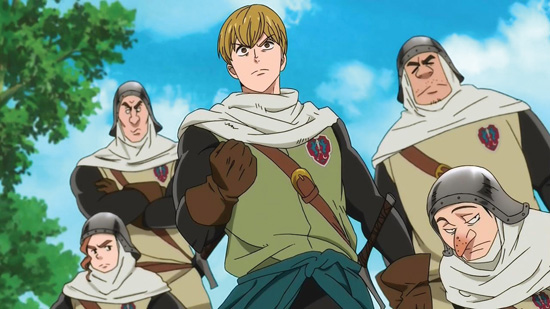
All of the production value in the world wouldn’t matter if The Seven Deadly Sins didn’t also have engaging characters driving the plot forward. While not terribly complex or multifaceted, the principal characters in the The Seven Deadly Sins receive just the right amount of development necessary to keep them interesting. In the case of the heroes, each Sin is defined not only by their valor and combat prowess, but also by a tremendous tragedy for which they (rightfully or otherwise) feel the need to atone. For example, Meliodas is blamed for the destruction of the entire nation of Danafor, while Ban the Undead is said to have burned down the Fairy Forest and murdered the Saint that guards the Fountain of Youth. By focusing on their back stories, the series grants us a deeper understanding of the heroes and their motivations.
Even Hawk and Princess Elizabeth, who all too easily could have been relegated to the roles of “comic relief” and “personal doormat,” have their turns in the spotlight. Between the two of them, Hawk and Elizabeth get an excellent reveal near the conclusion of the series and a moment of heroism that is genuinely poignant, although I won’t spoil the details of either event here. The same principles of characterization that apply to the heroes also apply to the villains, because in shonen action anime, yesterday’s enemy is tomorrow’s uneasy ally. The Seven Deadly Sins is willing to devote time and energy to humanizing even the vilest of villains so that the audience understands what demons (both literal and metaphorical) drive them to behave as they do.
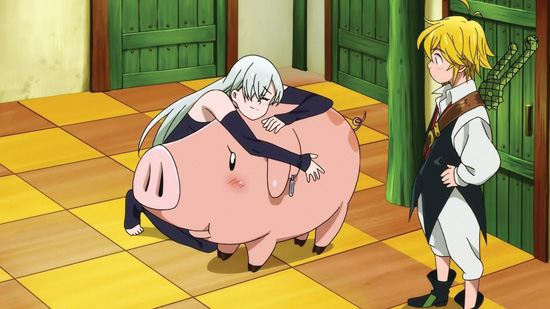
My only complaint with the series is that (like many other shonen action series) The Seven Deadly Sins has a character who behaves inappropriately toward women. Nearly every episode has at least one instance of Meliodas actively groping Elizabeth or making suggestive comments to her. These moments play as comedy and/or fan service, but I feel that they hurt the show. I realize that Meliodas’s lechery is supposed to stand in sharp contrast to his unassuming bravery and unwavering sense of duty in the face of mortal danger, but I feel that relying on this trope calls too much attention to the fact that The Seven Deadly Sins is a property aimed squarely at teenage boys.
After airing on Japanese TV from October 2014 to March 2015, The Seven Deadly Sins was added to the Netflix online streaming service in November 2015. The series is available with Japanese, English, Spanish, French, and German audio and English, Spanish, French, and German subtitles. I heartily recommend The Seven Deadly Sins to anyone who’s looking to marathon a solid shonen action series with compelling characters and a fun, fantastical setting. I gobbled up the entire series up in less than three days, so perhaps my sin of choice is gluttony. I’m also waiting impatiently for the sequel, so maybe my sin is envy toward the lucky Japanese fans who will get to see it first.



